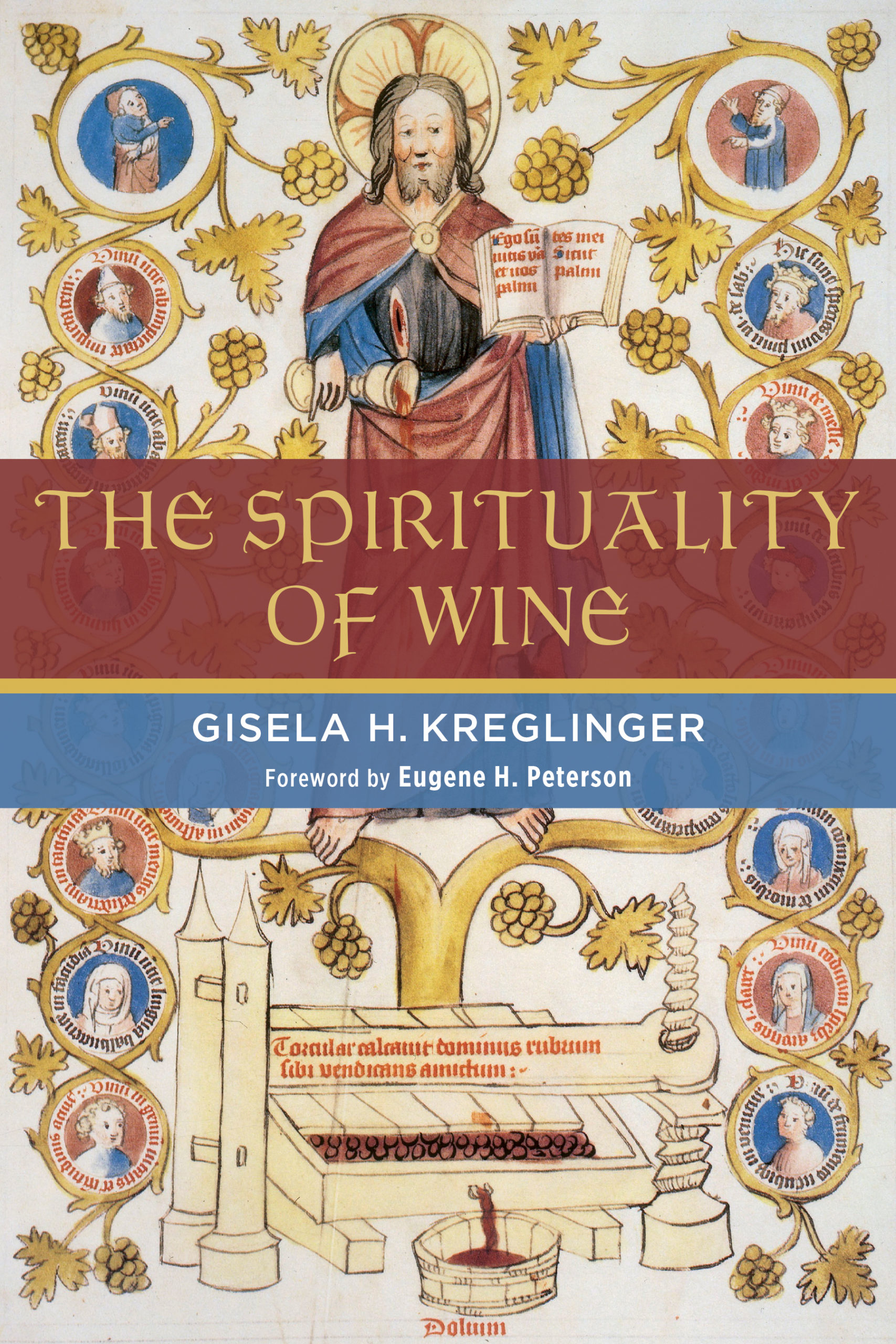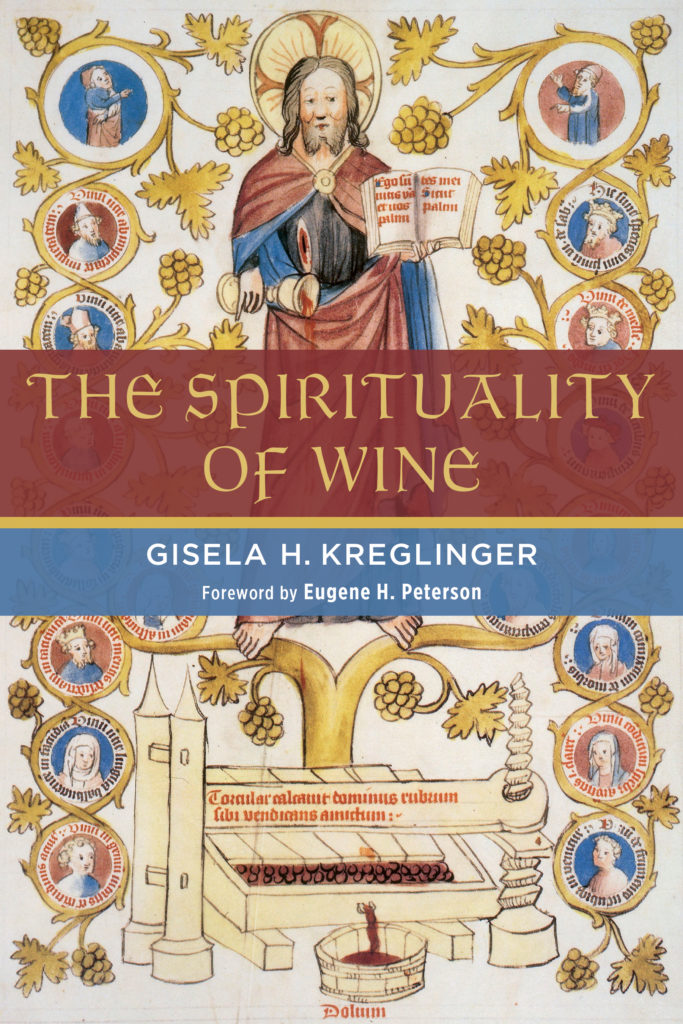Spirituality of Wine

A Denver Journal Book Review by Denver Seminary Alumna Sara E. Evans

Gisela H. Kreglinger. The Spirituality of Wine. Grand Rapids: Wm. B. Eerdmans Publishing. 282 pp. $20.40, Paperback. ISBN: 978-0802867896.
When Feuerbach stated “man is what he eats,” he may have been pointing to pure materialism, but his words actually hit upon a profound spiritual truth: food and drink is a gift from God that shapes us. Gisela Kreglinger picks up on this in her recent work, The Spirituality of Wine. In the pages of this remarkable book are reflections on the transformative power of not only wine but also land, food, aesthetics, feasting, and technology. Kreglinger’s writes with a personal, pietistic bent, full of wonder and prayerful insights born from a childhood on a winery in Franconia, Germany, and her time spent teaching Christian spirituality following doctoral studies at the University of St. Andrews.
The Spirituality of Wine is divided into two sections, “Sustenance” and “Sustainability.” In the first, Kreglinger builds the case for the centrality of wine in the Christian tradition, walking the reader through the various Biblical, theological, and historical understandings of wine in both Jewish and Christian faiths. The latter section offers more pragmatic insights gleaned from the place of wine in culture and the Christian faith.
Kreglinger’s first chapter, “Wine in the Bible: God’s Gift and God’s Blessing,” describes the various ways in which the Bible discusses wine: blessing, medicine, food, and the metaphoric language of the vine so common through the Old Testament Prophets and Jesus’ own teaching. Kreglinger also draws the reader to the recurring themes of community, feasting, joy, healing, and the promised restoration of the world. One of her most significant portions of this chapter showcases humanity’s early connection to agriculture, seeking to nurture creation towards flourishing in the Garden. Such work reminds us of our place in the world: embedded between the earth and God and dependent on both. Though this was distorted in the fall, Scripture looks forward to its redemption—an event often described with images involving wine: as a marriage feast with choice wine, and as a paradise where “small farmers with just enough land to provide for their daily needs and a little extra with which to make their hearts glad and rejoice in God, their Redeemer” (21).
Kreglinger offers a concise but thorough overview of the history of wine in the Christian tradition. Christian communities expanded the practice of viticulture throughout Europe and the New World—largely the work of monastic communities who needed wine for the Eucharist. This work of drawing creation into an offering towards God made wine a deeply sacred commodity. Kreglinger also addresses various ascetic groups who have derided the value of wine, as well as the motivation and impacts of the Prohibition movement in America.
Kreglinger moves to examine the significance of wine for the Eucharist. She considers the imagery of sacrifice, the Hebrew understanding of blood as the “center of life, both literally and metaphorically” (73), the Passover, and the ways in which wine shapes a Eucharistic experience. The Eucharist should inform our identity and determine how we “understand the rest of our lives” (78). Citing Catherine Bell, she points to the participation in ritual that shapes belief by bodily and intellectual engagement. She recalls Cyril and Chrysostom who believed that as wine engages the senses it imparts a very real experience of Christ in the Supper—as one smells, tastes, feels, and experiences the wine, believers should marry “mental images with physical action” and be reminded of Christ (80). It is worth noting that Kreglinger advocates a communal participation in the Table, that is, a sharing in the same cup rather than individual servings which came into vogue only after grape juice was substituted for wine (due to the hygienic problems of shared grape juice). This type of participation further shapes the belief of those in the church as an anti-liturgy to the consumerism and individualistic mindset of the world beyond the church. In a shared experience of the cup we are made into one body; the Eucharist creates the church.
From here, Kreglinger moves into a discussion of communal feasting, one of her best chapters. Her analysis of Babette’s Feast is excellent and her encouragement that Christians recover a sense of joy with creation and within community is compelling. She reminds us of Jesus’ first miracle which enabled a celebration to continue and insists that joy should “lie at the heart of the Christian life” (99). She reminds readers of the importance of the beautiful and aesthetics in the life of faith. Her description of “drinking beauty” is noteworthy. Kreglinger also considers how wine opens up vulnerability and moves conversation to a deeper level, though always denying drunkenness as an acceptable option for the believer. Instead, she advocates moderation and prudence as Christian virtues: a life lived between extremes so as to enjoy God’s good gifts but not worship them.
The final chapter of section one considers how an attentiveness to wine leads us to a place of attentiveness in our spiritual lives. She recovers the place of the senses and the body in a fully Christian spirituality. Kreglinger ties together a theological understanding of the senses with new discoveries in neuroscience showing how the mind utilizes the senses and memory. Learning to be attentive to our senses enables believers to engage in their relationship with God even more fully. “Savoring wine at its best is like praying. It takes effort and a willingness to engage in something that is far more complex than what we are used to…”(111). Wine should turn believers to a life of contemplation, calling us to “engage our senses in a prayerful way” (118).
Part two of Kreglinger’s book covers various areas of practice in wine culture. Here she shares insights garnered from time spent with vintners across the world and her own experience growing up on a winery. She explains soils, yeasts, and other environmental aspects of winemaking. Here she explores the role of technology, offering reflections on its place not only in winemaking but also our everyday lives. Which technologies put us in a place of mastery over creation and which enable us to nurture creation as fellow creatures? How is technology deceptive and addictive or glorifying to God?
Kreglinger also considers pragmatic topics including spiritual formation, health benefits, and alcohol abuse. The chapter “Rescuing Wine from the Gluttons for the Contemplatives” is quite superb. Kreglinger manages to avoid either extreme in addressing addictions. She locates the discussion in a place of tension: we must call sin what it is, but we must also recognize that the fallen world is complex and variable—meaning that there are social, hereditary, and cultural factors which play into issues of addiction. This nuanced chapter is worth reading on its own. Kreglinger also calls us to consider not only the symptoms (addictive behaviors) but the underlying causes of those things. What is it in Western culture that continues to drive individuals and communities towards addictive behaviors from drugs to alternative realities in video games? Her perceptive questions are helpful and even convicting for readers.
The Spirituality of Wine is full of wisdom and can be recommended to laity, pastors, and scholars. It is remarkably thorough without being cumbersome. Kreglinger’s arguments are theologically and biblically sound with many practical insights. The writing is well grounded and beautiful, even verging on the poetic at times. Her ongoing emphasis on the power aesthetics is an important piece and a key insight in a culture that generally values utilitarianism over the beautiful. She also offers brief thoughts on the development of imagination and habits through ongoing practices. Another strong point is her discussion of Christ in the winepress, a medieval image that creates space for a theology of suffering and the power of the incarnation. I had never heard of this evocative image and found it quite meaningful and moving.
I come from a background that has often not only devalued wine but even demonized it at times, along with other alcoholic beverages. Though I wish it were otherwise, I am not sure that even Kreglinger’s masterful book is enough to convince those who believe that alcohol has no place in the Christian life. Perhaps an expansion on her argument of the difference between living out of fear or love would help towards that end. Her emphasis on moderation in the Christian life is certainly a step in that direction.
Finally, Kreglinger leaves unanswered my own question of “what now?” After her explanation of modern over-manipulation of wine, unsustainable practices, and the commercialization and homogenization of the global market, I and my husband have decided to reconsider how we purchase wine. As we want to work towards the flourishing of creation, finding wine that is sustainable and “honest” about its terrior seems to be a logical choice in our purchasing habits. However, Kreglinger did not offer much practical direction. Explaining where to go from here would have been very helpful.
Despite a few minor flaws, The Spirituality of Wine is a noteworthy book. It deserves to be read for its aesthetic and theological acumen as well as its practical outworking.
Sara Evans, MA
Denver Seminary
April 2017
